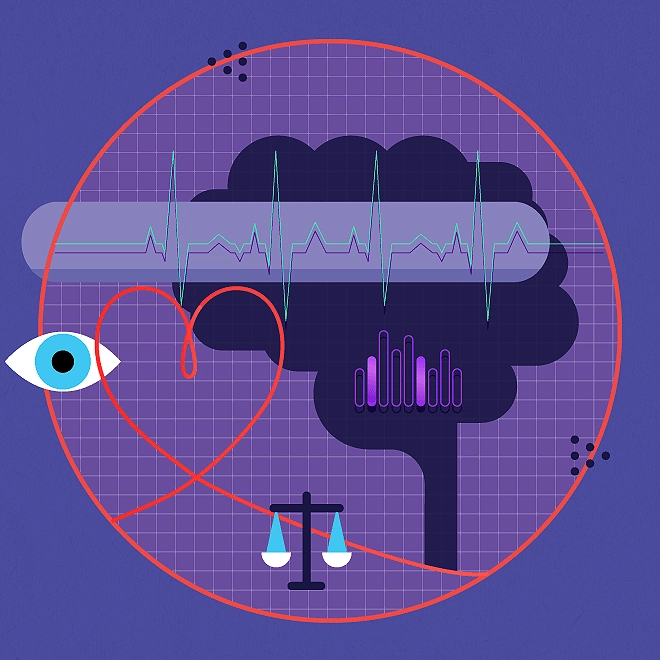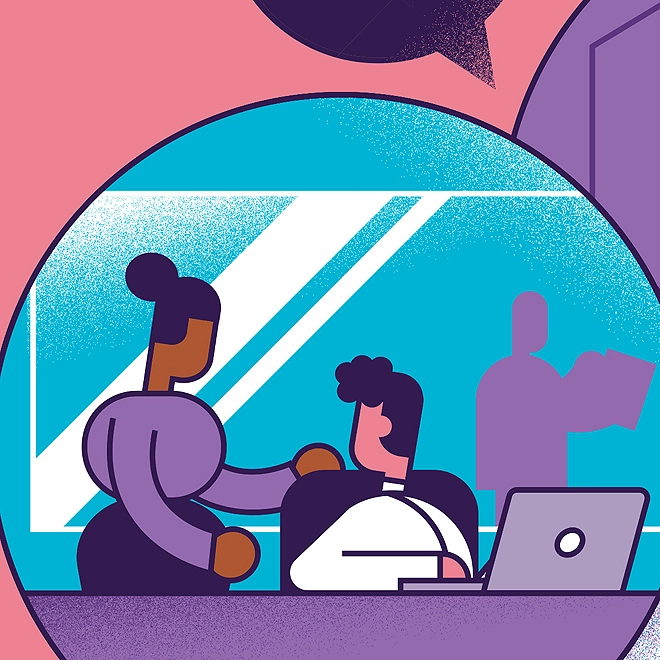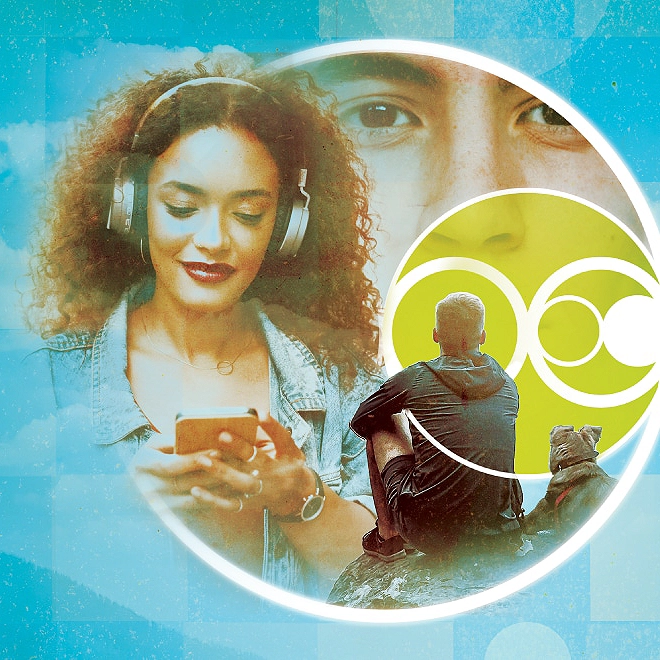Elevating the human experience in health and human services
Leveraging customer engagement platforms for a better, more personalized experience
To elevate the human experience, HHS agencies need to deliver the right content to the right person at the right time through their preferred channel. Technology, coupled with a sound personalization strategy, can make it happen.
As psychologist, economist, and Nobel Laureate Herbert A. Simon observed, “A wealth of information creates a poverty of attention,” limiting both what we can perceive in stimulating environments and what we can do.1
In our private lives, we’ve come to rely on a regular stream of tailored communications and gentle nudges to keep us on track in a world in which seemingly everything competes for our attention. Be it a text message, email, phone call, or social post, this type of personalized engagement serves to reassure us that our recent payment has posted, remind us that our webinar is about to start, alert us that our package has been delivered, prompt us to apply for an open job, and so on.
Mechanisms that deliver the right content to the right person at the right time through the right channel help people contend with the cognitive demands of the “attention economy.” They also make people’s experiences less transactional. No one wants to be treated like a number or a case—they want to be treated like a human being. An experience that’s tailored to a person’s circumstances, behaviors, attributes, and preferences becomes a more human experience.
This is particularly important for health and human services (HHS) programs. When HHS agencies deliver personalized, one-to-one communications and experiences, both program participants and agencies can see better outcomes. Applicants can gain greater peace of mind when they receive customized information about the status of their applications and benefits. They can save time by managing their benefits through digital channels and reduce the risk of missing information, as they might have if it had come to them through a less convenient channel. They can become more fully informed about the benefits available to them, helping them avoid coverage lapses or loss of service. Ultimately, those improvements can promote greater economic and physical health.
When participants receive proactive, clear information about their benefits and on how to solve common challenges, that can help reduce traffic at state call centers. As HHS agencies contend with fewer lapsed applications, the burden on their staff is reduced, and as residents are converted to digital channels, they enjoy lower program costs (see sidebar, “Potential benefits of delivering personalized experiences”).
Potential benefits of delivering personalized experiences
Potential benefits for HHS agencies
- Lower processing costs: When digital user experiences are personalized, adoption is higher, reducing reliance on more expensive channels such as in-person visits, phone calls, and direct mail.
- Fewer calls to customer support: Personalized, timely communications reduce confusion and enable program participants to solve basic challenges on their own, reducing calls to customer support.
- Reduced churn: Program participants who fail to renew their benefits can be more costly for a state. For example, the estimated cost of one Medicaid recipient churning one time is as high as US$600. Proactive and personalized reminders about upcoming benefits renewals and coverage changes can help to eliminate such costs.2
Potential benefits for program participants
- Peace of mind: Knowing the exact status of an application or receiving multiple reminders about an upcoming renewal can reduce anxiety.
- Flexibility and convenience: Allowing residents to manage their benefits through the channels of their choice can dramatically increase convenience. While direct mail might be best for some, email or SMS might work better for others.
- Confidence: Personalized communications, including nudges, can help foster engagement and alleviate confusion and errors on applications.
Personalization at scale through customer engagement platforms
To elevate the human experience, HHS agencies need to deliver the right content to the correct person at a specific time via their preferred channel. Doing this successfully requires an immense amount of data that may need to be integrated from various systems. Agencies need the ability to quickly develop different messages and content for specific individuals, deliver that information using a variety of channels, and do so in a way that respects individual preferences. Lastly, and most importantly, governments should be able to track ongoing efforts to assess and improve as they go.
This might seem like an impossible ask, but technology can make it happen. Customer engagement platforms can automate many of the activities required to communicate with customers, enabling personalization at scale. These tools leverage the power of data, artificial intelligence, and machine learning to determine who should receive certain content, what information that content should contain, when the content should be delivered, and through which channel.
These platforms can also help simplify and automate the creation and delivery of personalized messages to residents. Many platforms support this type of automation; they vary in their features, capabilities, configurability, integrations, and more. When considering which ones to use, governments should evaluate the extent to which a solution can:
- Support the scale, complexity, and security requirements of government use cases
- Integrate with a wide variety of data sources, including customer relationship management, customer support, and case management systems
- Send messages across multiple channels, including email, SMS, social, web, landline phones, and mobile push notifications
- Create, personalize, and send messages based on user behavior, attributes, preferences, business rules, or machine learning
- Automatically create and segment lists of people to message
- Generate user engagement reports (e.g., opens, clicks, bounces, etc.)
Applications for personalization across HHS
Elevating the human experience through personalized experiences has applications across health and human services, including:
- Eligibility and enrollment: Encourage applicants to use self-service and digital channels; get more of them to complete applications and change reports correctly; reduce churn by sending reminders to complete the benefit renewal process. Promote self-sufficiency by connecting participants with resources they can use on their own.
- Foster parent engagement: Identify and engage potential foster parents; provide support during placements to improve the experience of parents and children, and reengage former foster parents.
- Child support: Encourage non-custodial parents to make payments on time, and facilitate communications between noncustodial and custodial parents.
- Public health: Execute public health campaigns to encourage vaccine adoption, disease prevention, and healthy eating.
- Child care: Update caretakers about changes in capacity; send families details about child care options, and recommend providers.
The Commonwealth of Kentucky took a proactive, human-centric approach when it designed a new self-service portal that residents would use to apply for and manage their benefits. The Commonwealth wanted to give residents a better experience while also improving program performance, driving digital adoption, and increasing resident engagement.
Starting with an extensive human-centered design exercise to surface resident pain points, Kentucky identified several areas for improvement. They included: welcoming and onboarding, to educate new users about features of the online portal; end-to-end application tracking, to remind users about application deadlines, and let them know which modules they still need to complete; benefits renewal and expiration, to alert residents when they need to renew their benefits; and send regular reminders about completion.
To automate those communications, Kentucky created more than 30 email and text message templates that could be populated with information specific to each resident. The portal includes a preference center that residents can use to quickly update their chosen communications channels and indicate their language preferences.
Kentucky launched the new portal in October 2020. Within two months, the Commonwealth nearly doubled the percentage of residents who completed applications by their deadlines. Digital adoption increased by 77%, with the number of online portal accounts increasing from 32,000 to 57,000 by November. Residents opened 37% of emails they received through the system, compared with the government average of 21%. The portion of residents who not only opened the emails but also clicked on the content was 17%, more than four times the government average of 4%.
Getting started
Whether an agency aims to increase digital adoption, reduce churn, decrease call center volumes, improve customer experience, save time for employees, or achieve other goals, the journey starts with understanding baseline performance so the agency can track its improvements over time.
From there, the project team should gather qualitative and quantitative data to identify resident pain points, brainstorm tactics to address those pain points, and estimate the potential impact of those tactics. It can then use this information to develop a prioritized list of the tactics most likely to drive the desired improvement.
With that list in hand, an agency can determine the best platform to enable personalized engagement at scale. It can also determine what data is required for personalization, and where that data resides (e.g., CRM, case management systems, back-end databases, and websites).
Lastly, drawing on insights and leading practices from behavioral science, communications, marketing, and creative design, the agency should develop clear and compelling messages as a foundation for all communication and engagement activities.
By proactively addressing a person’s needs, HHS agencies can avoid burdening program participants with information overload, helping residents focus on the steps they need to accomplish to achieve their goals. Personalized communications can help HHS agencies build trust, increasing the likelihood that enrollees will comply with policies and due dates, participate in programs, and use digital self-service tools. Those human-centric strategies also help to reduce costs.
By elevating the human experience, HHS agencies can accelerate improvements to their policies, programs, and services and achieve better outcomes for the individuals and families they serve.
Health and Human Services practice
For more than 45 years, Deloitte state health and human services professionals have worked side by side with state agencies. Our mission is to help you achieve your mission—protecting and improving the health, safety, and well-being of our fellow citizens. We are focused on helping you improve the efficiency, effectiveness, and accountability of state services and benefits. Our breadth of offerings includes: eligibility and service integration, state health care, child welfare, childcare and early learning, and many others.


